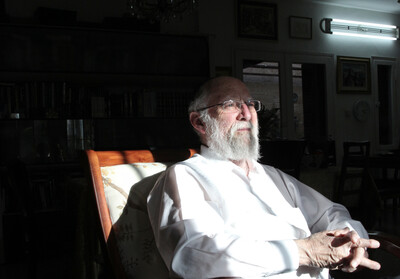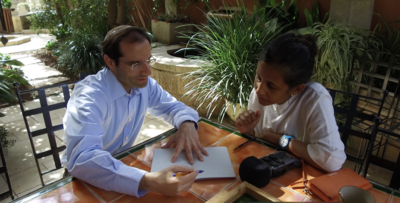Jerusalem
On this day I came into contact with some interesting personalities associated with Judaic culture and traditions. The first was Sarah Schneider, one of the few women who is practicing and studying Judaism in such depth.
After earning a bachelor's degree in molecular, cellular, and developmental biology from the University of Colorado, she went on to complete the advanced learning program at Neve Yerushalayim. In 1981, she moved to Jerusalem, where she has studied with rabbi Yitzchak Ginsburgh, one of the most respected teachers of Chassidut and Kabbala. Sarah is the founding director of A Still Small Voice, a correspondence school that provides weekly teachings in classic Jewish wisdom to subscribers around the world, and the founder of The Golden Thread, a homeopathic remedy based on Torah and Kabbalistic sources. Sarah also hosts meditation Retreats, guiding participants through traditional Jewish meditative practices and instructs them on how to harness the holy lights of Shabbat for healing and transformation.
The first thing that struck me about her was how she seemed to be brimming with joy. She was so vibrant and cheerful. Before our interaction, she called out an oral prayer to the water she was about to drink. I was surprised as I had witnessed similar water prayers in India. I was impressed with how our ancient traditions understood that water has a memory, which can be harnessed for our good—a fact which modern science is only coming to accept now.
Rabbi Kahana, the spiritual leader of Hazon Yichezkeil, a member synagogue of Young Israel (Yisrael Hatzair) in the Old City of Jerusalem, was born and raised in Brooklyn. Young Israel is a synagogue-based orthodox organization in the United States with a network of affiliated “Young Israel” synagogues.
As I entered Rabbi Kahana’s home, I saw that he was barefoot, so I asked if I should remove my shoes as well. He told me to keep them on, but added that Judaism should adopt the ritual of removing shoes before entering from India. He looked old but appeared very young in his being.
We spoke for a short time, during which he shared his knowledge about what the role of a rabbi meant in his tradition. He spoke about tradition and innovation, specifically about how innovation has the power to change rituals and thinking. I admired this forward thinking and his talk of change.

Meeting with Rabbi Shai Finkelstein was an unforgettable experience. He was composed and warm. He had extreme patience and a sense of calm as he answered my queries. During our conversation he became a mentor, enlightening me on the structure of biblical and modern Hebrew. I learned that Hebrew was revived as a spoken and literary language in the 19th century, once again becoming a living language from the status of being extinct.
We talked about Christian and modern Hebrew, about how each letter in Hebrew was a symbol of the eternal. He spoke to me about the elements, including water, earth, and air and their importance in Judaism. He also explained how copper was used in the first and second temple period as a common material as it was easily available and was not as expensive as gold.
Rabbi Shai was born in Haifa to Holocaust survivors. He served as a senior rabbi in a Synagogue in Memphis, Tennessee for about ten years and has returned to Jerusalem to serve as rabbi of the Nitzanim, a kibbutz in southern Israel.



